When we started our herd share operation, we weren’t new to dairy farming. Andy has worked on his own family’s farm since he was old enough to hold a bucket.
When I, (Teri) came into the picture in 1997, the Jorasz Family Dairy was in its 82nd year. At that time they were milking about 200 cows twice a day in a stanchion barn using a pipeline system to take the milk from the barn to the attached milkhouse bulk tank.
Breeding was (and still is) done by resident bulls, but now they are milking over 300 cows twice daily in a sophisticated double-16 parlor. The bulls keep the ladies bred regularly, the calves keep the cows in milk, and the cycle repeats.
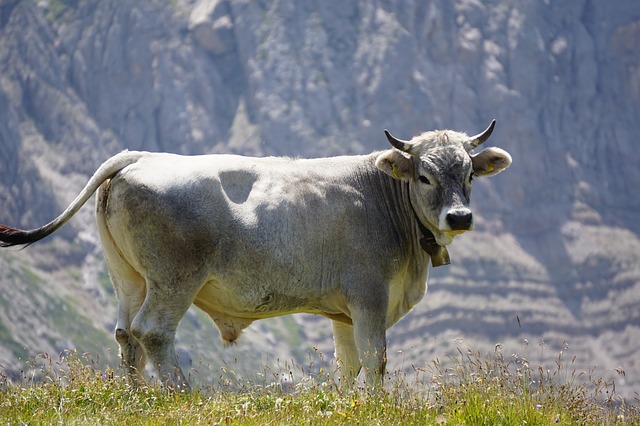
Having bulls around makes breeding cows simpler in some ways, harder in others. For instance, the bull can sense when a cow is in heat, even if you and I can’t detect it. On the other hand, you have a possibly (most likely) aggressive bull running around- you can never trust a bull.
Some cows are very expressive when they are in heat, and you can see them out in the pasture jumping on the other cows backs, or licking each other. Or when they come in to the barn, they have bloody or egg white like discharge from their vagina indicating that you have missed their heat, or that they are currently in heat, respectively. In our experience, more relaxed cows are more difficult to read than their more flighty sisters.
Once the bred cow is about 8 weeks away from calving, you dry her up (quit milking her) in preparation for the birth. This time off allows the cow’s body to rest and recover from milking, and also for her udder to switch from making milk to begin making colostrum for the calf. Much like people, a cow’s colostrum contains everything her calf needs the first few days of life- nutrients and antibodies to keep it from becoming ill. About a week or so after calving, the udder starts producing milk!
When we started the herd share, we had it all planned, and on paper it was simple. To fulfill ‘x’ amount of shares we’ll need ‘x’ amount of cows producing ‘x’ amount of milk. We calculated the number of cows we needed, and then added one so that while one cow was dried off for 8-12 weeks for calving, we had an extra cow in milk to take her place. We didn’t want to keep a bull because Andy knew, with all his experience, that I would definitely not like to be catching cows to milk with a bull stalking me around the pasture.
Sounds like a good plan, right? Enter our Brown Swiss cows
To say that our cows are relaxed is the understatement of the year. If our cows were next to a cannon, in a dead sleep, and a marching band went by with a lighter, and lit the fuze which was made of a roll of firecrackers, causing the cannon to go off, our cows would open one eye and then go back to sleep. I doubt they would even jump.
Our plan would have worked great, if you could tell when our darn cows were in heat! We’d see the occasional discharge, the occasional jumping in the field, but by the time our AI guy, Petey, would get here, we’d always miss the mark!
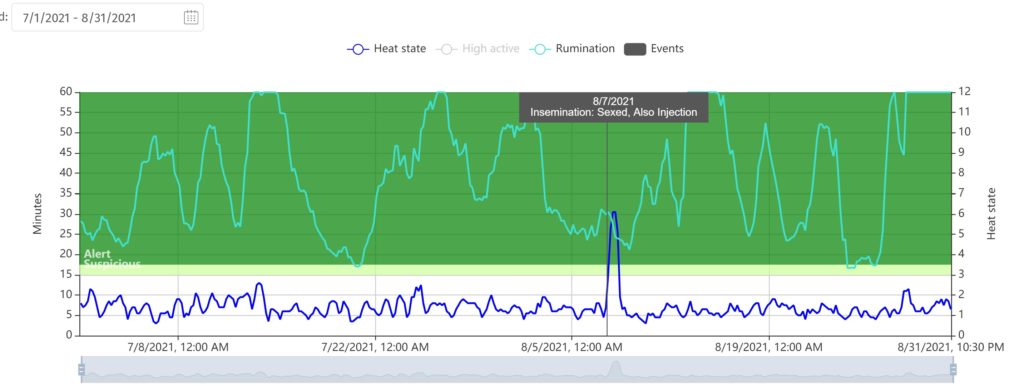
As you can imagine, after many months of failure, we started to get nervous about our plans. Naturally, after being in milk for so long, a cow’s production will drop. The cream content percentage does go up, which people love, but it’s best for the cow to be bred every 12-18 months or so, with the 8-12 week break in between for recovery.
We were at a loss.
We had always ordered our semen from Select Sires, and one day, our invoice came in the mail. In it, was a brochure for CowManager. Being interested in that kind of technology, it immediately got my attention. An ear tag that could pinpoint a cow’s heat cycle? Yes, please! Where do I sign?
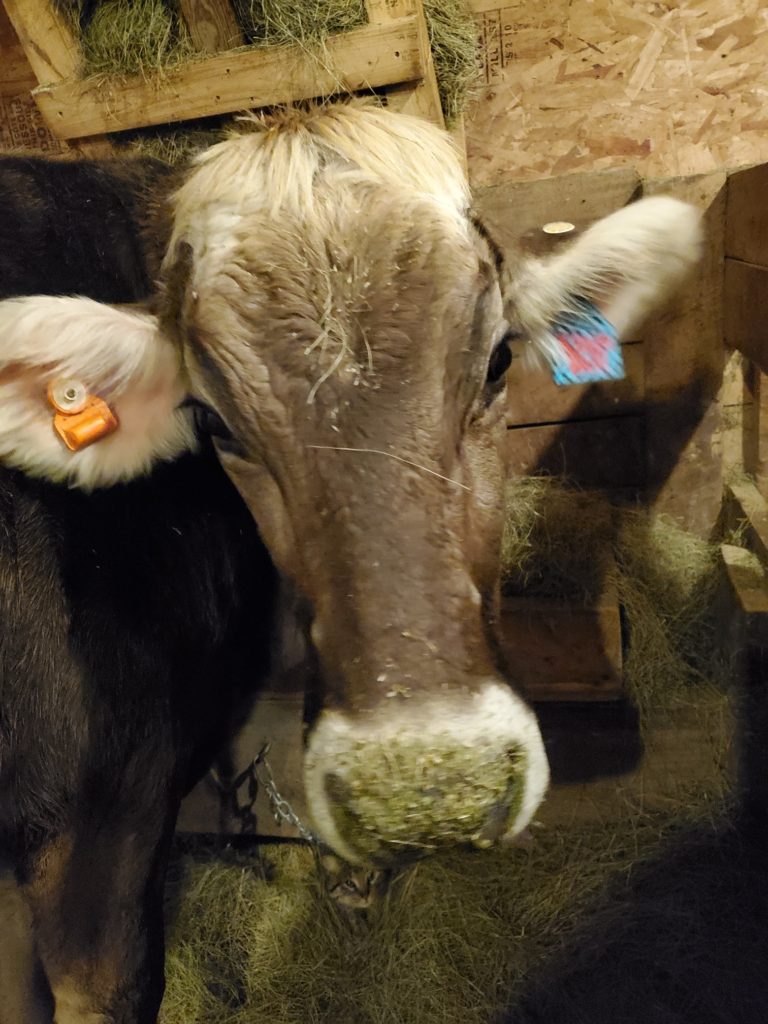
After meeting with our CowManager rep, we ordered the tags and never looked back. As of this writing, all of our cows are right on with their breeding schedule. The tags also report on other health concerns- temperature, how often they eat, and how long they are resting. I don’t have to tell you all what a relief it is for us to know that we can stay on top of our sweet cows’ health and reproduction.
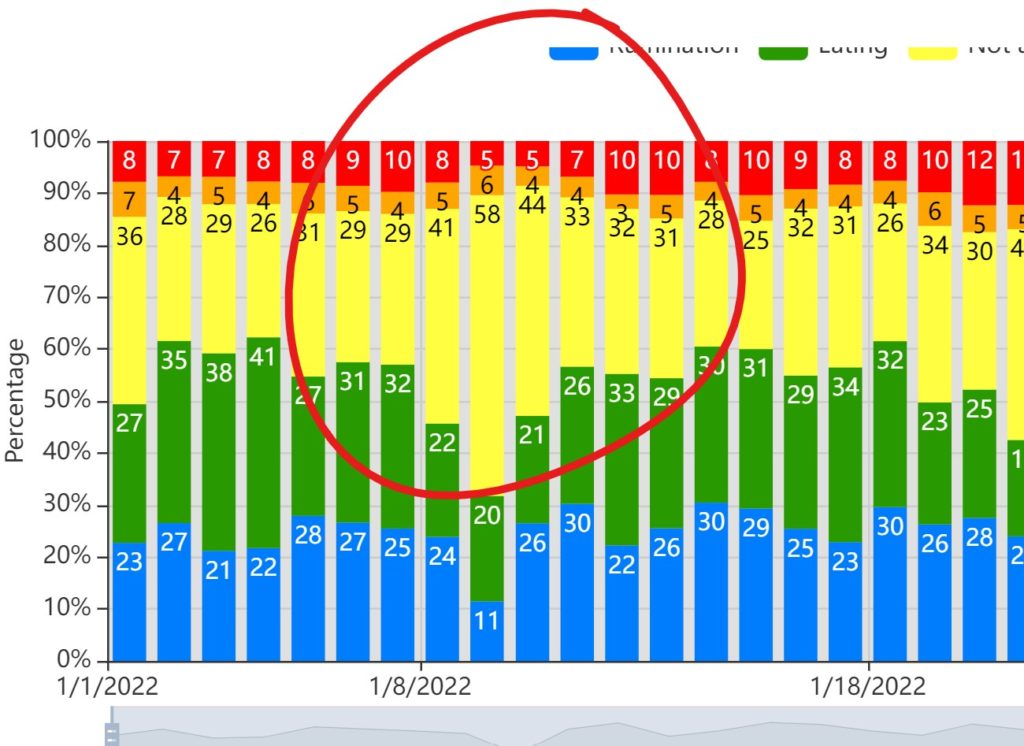
Already, besides the reproductive help, it has let us know when a cow was not as active as it should be. It’s usually just that she’s being lazy, but we always check it out when a ‘health alert’ goes off. This winter we had trouble with stray voltage by our water fountain, and Karmel had stopped drinking. The other cows didn’t seem to be bothered, but she must be extra sensitive, and I’m sure that it would have been too late to help her if we had not known as early as we did because of the tag.
CowManager builds norms for each cow, based on her individual habits, because each animal is different. It does take some time to get enough data into CowManager that it can accurately report the health of a cow, but it’s worth the wait! It was also a bit of an investment, but we want you to know & understand that we use our earnings to improve our lives, but also the lives of the animals we care for.
CowManager has really been a god-send for us and has equipped us to keep happy, healthy cows!!!!
That the man of God may be competent, equipped for every good work.
2 Timothy 3:17



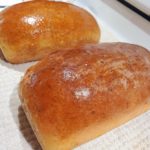
Very interesting….you continue to learn and keep up with technology. You’re using it to do an even better job. Impressive.
What a neat thing!!
Smart farming !!
So interesting and informative! Really enjoyed reading this! Thanks
Very informative post! Thanks Teri!